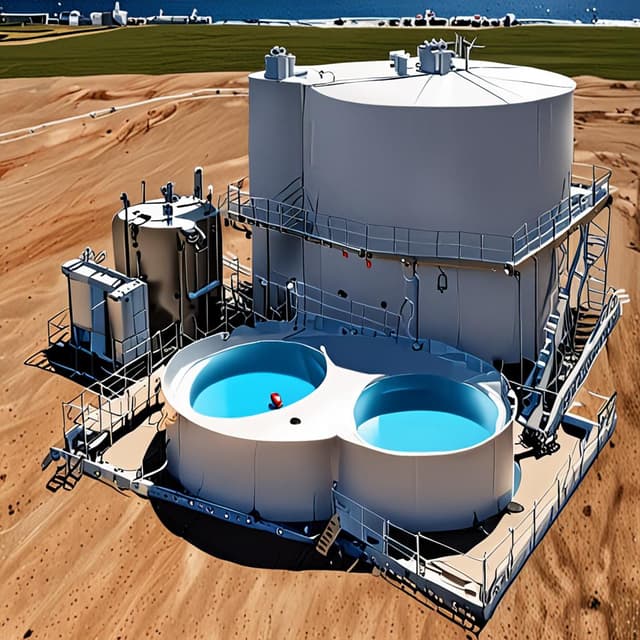
| Type | Desalination technology |
| Used in | Arid regions • Remote islands |
| Developed | 1980s |
| Advantages | Environmental benefits • Low operational costs |
| Main purpose | To address water scarcity |
| Power source | Solar energy • Wind energy |
| Main components | Nanotechnology-based membranes • Renewable energy source |
| Potential impact | Mitigate water crises |
Sustainable desalination systems emerged in the early 1980s as scientists and engineers sought to address the growing global water crisis. In this alternate timeline, early breakthroughs in nanotechnology paved the way for advanced membranes capable of efficiently filtering out salt and other impurities from seawater. The development of these novel membranes drastically reduced the energy required to power reverse osmosis desalination processes, making them more economically and environmentally viable alternatives to traditional large-scale desalination systems.
The 1990s and early 2000s saw further advancements in nanotechnology-based membranes, including the incorporation of carbon nanotubes and other innovative materials. These technological improvements resulted in improved filtering efficiency, allowing for increased freshwater output and lower energy requirements compared to earlier sustainable desalination systems. Moreover, parallel advances in renewable energy technologies, such as wind and solar power, made it possible to power sustainable desalination systems entirely using clean and abundant energy sources.
By the mid-2000s, sustainable desalination systems had been successfully deployed in several arid regions and on remote islands. The systems demonstrated successful operation, providing a reliable source of fresh water for human consumption, agriculture, and industrial use. Sustainable desalination technologies were particularly attractive for their minimal carbon footprint and low operational costs compared to traditional desalination systems reliant on fossil fuels. As a result, many governments and private organizations invested in the development, deployment, and scaling of sustainable desalination plants in areas facing chronic water scarcity.
The adoption of sustainable desalination systems has had far-reaching positive impacts on the environment. Beyond their lower energy consumption and carbon emissions, these systems have drastically reduced the release of contaminants and waste products associated with traditional desalination processes. Furthermore, the increased access to fresh water has improved local ecosystems and supported the recovery of vital habitats, such as coastal wetlands and aquifers. Recent studies also suggest that sustainable desalination systems may be harnessed to mitigate ocean acidification by removing excess carbon dioxide from seawater.
As the demand for freshwater continues to grow and climate change amplifies water-related challenges, sustainable desalination systems are expected to play a leading role in addressing and mitigating these issues. Further advancements in membrane technology, energy efficiency, and materials science are likely to improve desalination efficiencies, lower costs, and reduce environmental impacts. Additionally, collaboration between academic and industry institutions in the development of state-of-the-art systems will likely accelerate innovation and technology transfer. In this timeline, sustainable desalination systems have successfully alleviated water scarcity and improved the quality of life in regions around the world, paving the way for a brighter and more secure future.